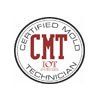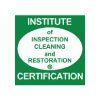Mold Facts and FAQs
Award-Winning Company | Discounts Available | Se Habla Español
Award-Winning CompanyDiscounts AvailableSe Habla Español
The Dangers of Mold
There are approximately 400,000 different types of molds. Of these, only about 100,000 have been properly identified, about 80 strains of mold have been identified as having the potential to cause an illness, and a handful of them are deadly.
Considering the potential dangers of mold, many find it concerning that mold is one of the most common problems in homes, apartment buildings, and office buildings. If left untreated, mold can pose a risk to a person’s health and damage structural building materials such as dry wall and wood.
Ten Important Facts about Mold
Here are some important facts about mold:
- Allergic reactions, asthma, and other respiratory complaints are just a handful of the potential health issues and symptoms associated with mold exposure. More serious complaints may include migraine headaches, nausea, or vomiting.
- Property owners cannot eliminate all molds and mold spores inside the house. Controlling moisture inside the house is the best way to reduce the potential for mold growth.
- If mold is a problem in a house or building, the property owner should clean it up as well as possible. Then, all potential mold sources (usually moisture) should be eliminated.
- If the problem persists, the source of the moisture or water leak should be identified and fixed. After the water leak is repaired, a mold assessment should be performed to determine if mold remediation services are required.
- There are several measures property owners can take to reduce indoor humidity, and thereby decrease the potential for mold growth. The moisture that is produced by showers and clothes dryers can be directed outside; air conditioners and dehumidifiers can be turned on to reduce moisture in the air; and overall ventilation can be improved.
- When home improvement projects are in progress, clean, dry, or remove any damp or wet building materials and furnishings to prevent the growth of mold.
- Mold can be cleaned off hard surfaces with a mix of water and detergent. Absorbent materials such as the ceiling or dry wall may need to be replaced.
- Condensation, which usually forms on cold surfaces such as pipes, windows, outside walls, and hard surface floors, can cause mold to form.
- Property owners should not install carpeting in moisture-ridden areas. These would include those areas by sinks, basins, showers or bathtubs, or in areas with chronic leaks or frequent condensation.
- Mold is quite aggressive and can be found almost anywhere. It can grow on virtually any surface, providing that there is moisture build-up. Indeed, it can grow on food, paper, wood, and certain building
San Diego Mold Removal
The technicians at All American Carpet & Tile in San Diego are expertly qualified to assist property owners with any difficult or persistent mold issues they may have in the home, apartment, or office. Contact All American Carpet & Tile for an estimate; a technician will assess the home for mold and advise property owners of their clean-up options.
FAQs About Mold
The certified and extensively trained technicians at All American Carpet & Tile in San Diego are committed to eradicating harmful mold from homes, apartment buildings, and other residences. When mold is found in the home, inaction is simply not an option. Property owners should contact All American Carpet & Tile for a mold assessment as soon as possible. If mold is identified, the technicians will identify its source and submit a report detailing the location and extent of the mold problem, along with removal solutions.
Of course, it is common for property owners to have immediate and pertinent questions when mold is discovered. Here are some frequently asked questions customers have when dealing with mold in the home.
Contact the Mold Removal Specialists
Contact the mold removal experts at All American Carpet & Tile
in San Diego right away for a home mold assessment. The technicians can advise property owners on the extent of the problem and what it will take to remedy the issue.








Share On: